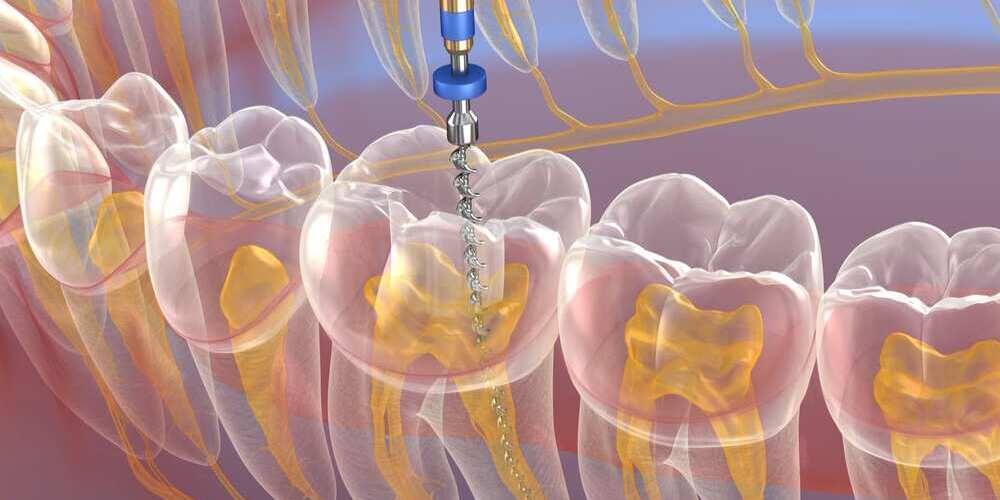
Second Root Canal Treatment on the Same Tooth: Root Canal Retreatment
The most common reason for performing root canal retreatment is the failure of a previous root canal treatment. This often arises from issues like incomplete cleaning or filling of the root canals or missed canals. Sometimes, even if the initial root canal treatment was well done, the tooth can become reinfected due to neglect, such as a filling falling out or the tooth fracturing. Furthermore, infections in the tissues around the tooth can also indicate the need for retreatment.
Reasons for the failure of previous root canal treatments primarily include:
- Presence of bacteria in the root canal system,
- Procedural errors during root canal treatment,
- Instrument breakage,
- Perforation,
- Overfilled root canals,
- Underfilled root canals,
- Step formation in the canal,
- Condition of restorations placed on the tooth after root canal treatment.
Retreatment Procedure
Retreatment typically takes two sessions to complete. In the first session, the old canal filling is removed, missing areas are cleaned, additional canals are found and shaped. Medication is placed inside the canals and left there for 5-14 days. During this time, the tooth is temporarily sealed. In the second session, the cleaned root canals are refilled, and the tooth is restored. In cases of persistent infection, this procedure may be repeated several times until the infection is completely resolved. The duration of treatment varies depending on the condition of the tooth and the complexity of the treatment.

How to Care for Teeth After Retreatment
Teeth that have undergone root canal retreatment can be more fragile than normal teeth. Therefore, excessive pressure or force should be avoided. To prevent fracture of the retreated teeth, restorations such as onlays, overlays, endocrowns, or crowns are more beneficial in protecting the tooth.
Pain During Treatment
Pain or discomfort is not felt during root canal retreatment as the area around the tooth is anesthetized. However, post-treatment pain, sensitivity, or swelling are normal and usually subside within a few days.
Consult an Endodontist for Persistent Pain and Swelling
Pain, sensitivity, or swelling after retreatment is normal and generally subsides within a few days. However, if there is persistent pain or swelling, it is important to consult an endodontist.

Success Rate of Treatment
Root canal retreatment is performed when the initial root canal treatment fails. This treatment is an alternative to tooth extraction and, while not always successful, has a substantial success rate. Studies on the success of root canal retreatment have shown success rates ranging from 77.8% to 84.82%.*
What to Do If Retreatment Fails?
If retreatment fails, several options are available for the treated tooth. If the condition of the tooth permits, apical resection can be done. However, if the tooth is badly damaged or has cracks or fractures, extraction may be necessary. Implant application is possible after extraction. Our endodontist at the clinic will evaluate the most suitable treatment method for the case.
Is the Tooth Lost After Root Canal Retreatment?
Root canal retreatment is performed to prevent the loss of the tooth and to extend its lifespan. However, if the treatment fails or needs to be repeated, extraction of the tooth may be necessary.
Cost of Root Canal Retreatment
Retreatment is a more difficult and usually more expensive procedure than initial root canal treatment, as it requires special equipment and tools. Also, this procedure is typically performed by endodontists. The price of root canal retreatment starts from approximately 6000 TL in the 2024 minimum wage list. The exact price is given after an endodontist examination. You can schedule an appointment with our endodontist at our clinic.
Root canal retreatment is a treatment method applied when a previously performed root canal treatment fails or when new infections occur in the tooth.
Nowadays, the procedure of redoing root canals (retreatment) is commonly performed, and thanks to the knowledge, experience, and proper equipment of the dentist, very successful results can be achieved. Root canal retreatment can save the tooth and extend its lifespan. However, retreated teeth can decay or break again. Therefore, regular maintenance and annual check-ups of these teeth are important. Many teeth that can be retreated are sometimes considered for extraction by some dentists. Therefore, if you experience a problem with a tooth that has had root canal treatment, it is very important to consult an endodontist.
- (1) Success rate of orthograde endodontic retreatment after failed apicectomy – A retrospective study David Appel, Edgar Schäfer, Carsten Appel
- (2) Outcomes of Nonsurgical Retreatment and Endodontic Surgery: A Systematic Review Mahmoud Torabinejad, DMD, MSD, PhD, Robert Corr, DDS, MS, Robert Handysides, DDS, and Shahrokh Shabahang, DDS, MS, PhD
